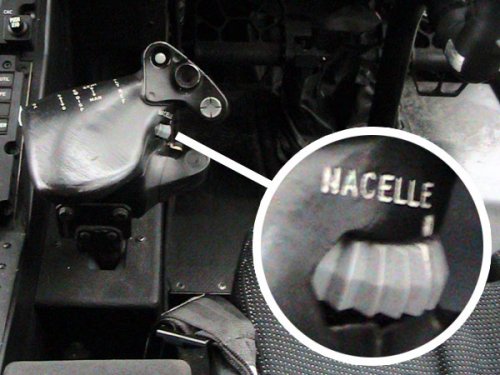The F-35 selected acquisition report (SAR) reported last Spring that there had been no progress in reducing its staggering $1 trillion, 50-year life-cycle cost. Then in June 2013 it was reported that "the company and the U.S. military are taking aim at a more vexing problem: the cost of flying and maintaining the new warplane." Not only was the total cost stratospheric but the cost per flying hour was much higher than the legacy fleet at $31,922.
What could be done to cut high operations and sustainment (O&S) costs? International customers were being scared away by high production costs, and particularly by high operating cost.
The F-35 program office had the answer. Simply announce that the costs are lower! Why not? The result:
Pentagon Cuts F-35 Operating Estimate Below $1 Trillion
WASHINGTON (Reuters), Aug 21, 2013 - "The U.S. government has slashed its estimate for the long-term operating costs of Lockheed Martin Corp F-35 fighter jets by more than 20 percent to under $1 trillion, according to a senior defense official, a move that could boost international support for the program."
That arbitrary announcement out of the F-35 program office that operating cost had dropped from $1.1 trillion to $857 million didn't fly very high.
(See related story—Ed). On September 6 the Pentagon acquisition chief Frank Kendall announced that there would be a review of F-35 operating costs. Kendall indicated that the program office's estimate might have been overly optimistic.
In fact the GAO has reported that F-35 operating and support costs (O&S) are currently projected to be 60 percent higher than those of the existing aircraft it will replace.
“We’re … looking at that number,” Kendall said. “The official number is still the one we put up in the SAR [selected acquisition report]. We’re going to do a review of F-35 this fall. We’ll get another estimate out of CAPE [Cost Assessment and Program Evaluation] for that and we’ll probably make some adjustments.
On October 6, 2013 Kyra Hawn, spokeswoman for the Pentagon’s F-35 program office, said a high-level Defense Acquisition Board meeting was expected to proceed on Monday despite the partial government shutdown. The meeting has already been postponed several times.
Well that CAPE meeting came and went, with no news on F-35 operating cost. The cost data must have been bad and so it had to be covered up, just like other cost data (production cost, etc.) on the F-35. We did get some PR fluff out of the meeting, though. “While risks remain, progress on the F-35 program at this point has been adequate to support a decision to budget for increased rates,” Frank Kendall, under-secretary for acquisition, said in a decision memo.
If it was good cost news supporting an increase in production rates, then why didn't Kendall release the data? Apparently the opposite was true, the data was bad. And now we have the data, in the FY2013 F-35 test report, and it isn't pretty.
FY13 DOT&E Report
-- Mean Flight Hours Between Critical Failure (MFHBCF)
variant--threshold/observed
F-35A--20/4.5
F-35B--12/3.0
F-35C--14/2.7
-- Mean Corrective Maintenance Time for Critical Failure (MCMTCF)
variant--threshold/observed/FY12 Report
F-35A--4.0/12.1/9.3
F-35B--4.5/15.5/8.0
F-35C--4.0/9.6/6.6
So you fly the F-35A for 4.5 hours, get a critical failure, and then it takes 12.1 hours to fix it, or nearly three hours longer than it took last year. (That's hours, not manhours; Eglin AFB has seventeen mechanics per F-35.)
Similarly with the F-35B -- fly it for 3 hours, critical failure, then corrective maintenance takes 15.5 hours (7.5 hours more than last year).
The F-35C will fly for only 2.7 hours before 9.6 hours for corrective maintenance time. (Only one engine, too, out over the deep blue water.)
If anybody thinks the acquisition cost is high, and it is, it will be totally eclipsed by the operating cost. An independent audit by KPMG has estimated the cost of buying and operating the F-35 warplanes at $600-million per jet, two-thirds of that operating cost.
Captain Overstreet of the F-35 program office warned in November that while development costs are high for the F-35, they will be “dwarfed” by the sustainability costs. Back in May 2011 Defense Undersecretary for Acquisition Ashton Carter described current projected costs for the F-35 as “unacceptable.”
All of this reality runs against what the early F-35 promises were.
-- From the 1997 doc -- "The Affordable Solution - JSF":
Tactical Aircraft Affordability Objective 1997: R&D 6%, Production 54%, total dev & prod 60%, O&S 40%.
-- The actual 2014 test data is way different:
dev & prod -- $397B = 26%, O&S -- $1,100B = 74%, total -- $1,497
So the F-35 has gone from an initial-operating cost ratio of 60-40 to 26-74, and that's with much higher production costs. Nobody can afford that, especially foreign customers -- which is why it's been covered up.
About the author:
Don Bacon is a retired army officer with acquisition experience, who has seen how programs go wrong in spite of the evidence, largely because of the military 'can-do' attitude which leads to harmful, ineffective results. Now he is a private citizen who sees the necessity of challenging baseless claims in order to get to the truth, and so the truth will prevail.
-ends-



